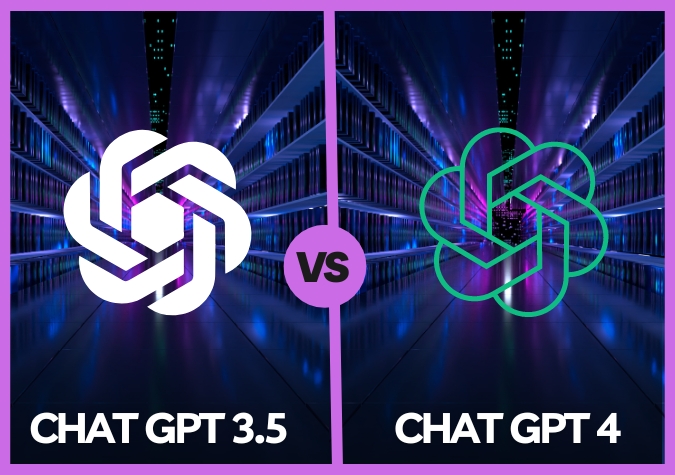ChatGPT, GPT-3.5, and GPT-4 are all large language models (LLMs) developed by OpenAI, but they have distinct characteristics and capabilities:
Difference between GPT-3.5 and GPT-4
- Model Parameters:
- GPT-3.5: It has 175 billion parameters.
- GPT-4: The latest version, GPT-4, has even more parameters, although the exact number is not specified in the provided information.
- Capabilities:
- GPT-3.5:
- Processes plain text input and generates natural language text and code output.
- Doesn’t handle images or visual inputs.
- Faster in generating responses.
- No hourly prompt restrictions.
- GPT-4:
- Can accept visual inputs, such as images of graphs or worksheets.
- Still processes plain text input and produces natural language text and code output.
- Improved accuracy and fewer factual errors.
- Comes with hourly prompt restrictions.
- GPT-3.5:
- Access:
- ChatGPT Plus (ChatGPT+): The paid version of ChatGPT, which uses GPT-4 technology, costs $20 per month.
- Free Version: If you’re using the free version of ChatGPT, you’ll still be using GPT-3.5 for now.
similarities between ChatGPT-3.5 and GPT-4
- Natural Language Models:
- Both GPT-3.5 and GPT-4 are natural language models used by OpenAI’s ChatGPT and other artificial intelligence chatbots.
- They can both respond to prompts like questions or requests and provide responses that closely resemble those of a real person .
- Response Generation:
- Both models generate human-like responses to input text.
- They excel at crafting conversational and coherent replies.
- Usage in ChatGPT:
-
- ChatGPT-3.5: Currently, the model behind ChatGPT technology available through the web interface and API.
- ChatGPT-4: The latest version, potentially larger and more capable, but still used for similar purposes
-
| Aspect | GPT-3.5 | GPT-4 |
|---|---|---|
| Model Parameters | 175 billion parameters | (Rumored) 1 trillion parameters |
| Capabilities | – Text-only input/output | – Accepts text and image inputs<br>- Generates text outputs<br>- Human-level performance on benchmarks<br>- Improved contextual understanding |
| Speed | Faster in generating responses | – |
| Prompt Restrictions | No hourly prompt restrictions | Hourly prompt restrictions apply |
| Training Data | Smaller model size, less data | Larger model size, broader knowledge base |
| Use Cases | General chat, text-based tasks | Multimodal tasks, more complex instructions |




